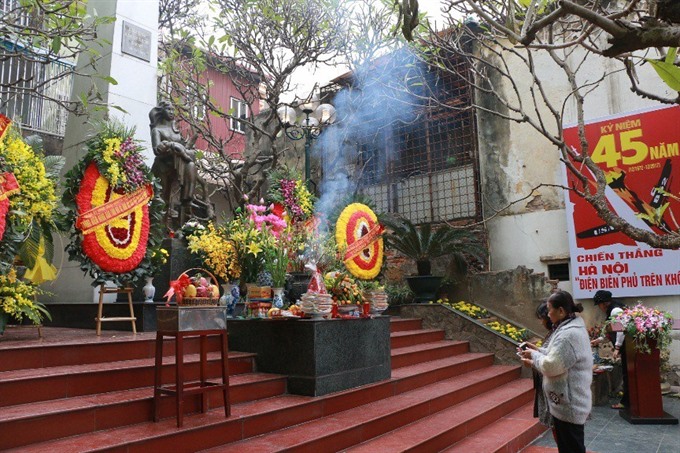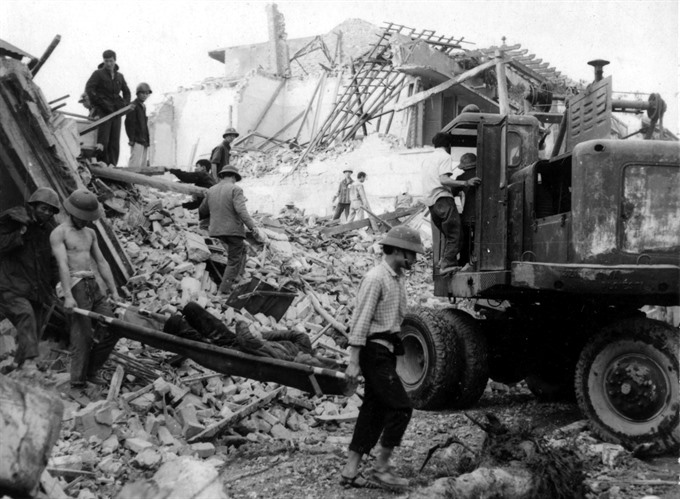 Life & Style
Life & Style

Few living people witnessed the carnage and destruction of the bombing of Hà Nội in December 1972. But those who were there remember it clearly.
 |
| Razed: Hà Nội’s Khâm Thiên Street in the aftermath of an American B-52 air blitz on December 26, 1972. — VNA/VNS Photo Văn Bảo |
HÀ NỘI — Few living people witnessed the carnage and destruction of the US bombing of Hà Nội in December 1972. But those who were there remember it clearly.
There is a monument for victims of the bombing on Khâm Thiên Street. At its centre stands a woman with a child in her arms. The child lies still, motionless as the woman appears to take a step forward with a blank expression on her face.
The street was one of the capital city’s earliest and busiest streets. It was so well-known for its many tailor shops and "geisha style" parlours during French colonial times that Hanoians used to refer to it simply as “the street of tailors or the street of geishas”. There was not a target of strategic value to American bombers in the vicinity.
It is hard to imagine that this peaceful and busy street was the site where one of the most hideous and brutal war crimes during the long American war in Việt Nam took place. On the night of December 26, 1972, almost the entire street was laid to waste by American B-52 bombers. Two hundred and eighty-seven civilians were killed and 290 severely wounded. Of the ward’s 30,000 residents, eight thousand became homeless over just an hour.
The heavy casualty was no coincident. Prior to the bombing families were evacuated to the countryside. They only returned because they believed a large scale attack was highly unlikely during Christmas. “It’s the season of mercy they say,” people reassured each other.
Wrong they were. That night some lost their parents, some lost their brothers and sisters, some their children. Almost everyone lost someone dear to them that night. There were even families with no survivors.
“I was working my late shift that night. By the time I got back the street was in ruins. There was nothing but fire and wreckage. People were crying and calling out for their loved ones in the dark. I lost my family that night,” said Nguyễn Văn Cầu, 76, a local resident.
During the entire duration of Operation Linebackers II, which commenced on December 18t and lasted until December 29, American aircraft dropped some 20,000 tonnes of bombs on major northern cities including Hà Nội and Hải Phòng, killing thousands of civilians and destroying much of the region’s infrastructure.
The operation remains one of the largest air raids ever carried out by the US Air Force. It was later explained as an effort to bring the North back to peace negotiations, which were in a stalemate, by Nixon administration. However, many historians believed that the bombing had little to no impact as no major changes were added to the historic Paris Peace Accords, which ended American direct military combat in Viêt Nam, signed in early 1973.
The capital’s Khâm Thiên Street is now known by another name by the capital residents, “B-52 Street”, a sad reminder of its residents’ tragic fate. Local residents now gather at the monument every year on December 26 to mourn their dead. Among them are Cầu and his neighbours, now with much grey in their hair, still bearing witness to the horror and destruction of a war that ended almost half a century ago. — VNS
 |
| The lost: Local residents gather to mourn their dead on the 45th anniversary of the attack at the B-52 victims monument on Khâm Thiên Street. — Photo Huy Thanh |
 |
| Destruction: Local residents and rescue workers dig through the rubble for survivors in the aftermath of an American B-52 air blitz on Khâm Thiên Street on December 26, 1972 in Hà Nội. — VNA/VNS Photo |




